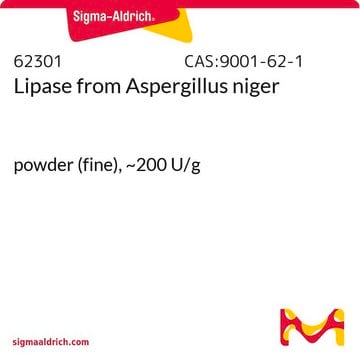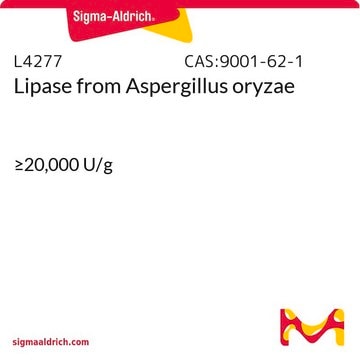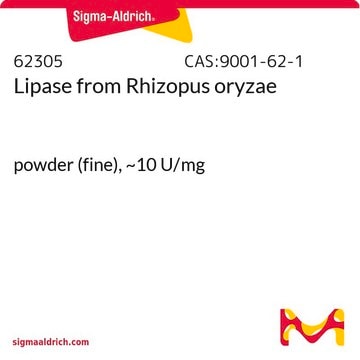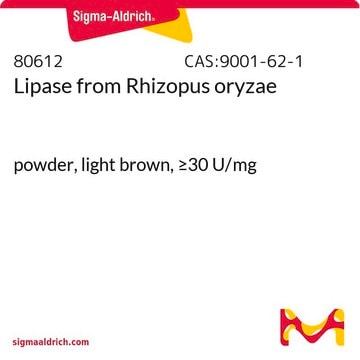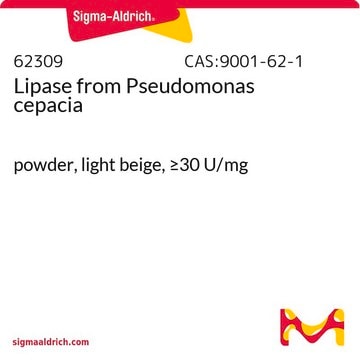L0382
Lipase from porcine pancreas
Type VI-S, ≥20,000 units/mg protein, lyophilized powder
Sinónimos:
PPL, Triacylglycerol acylhydrolase, Triacylglycerol lipase
Seleccione un Tamaño
Seleccione un Tamaño
About This Item
Productos recomendados
tpo
Type VI-S
Nivel de calidad
Formulario
lyophilized powder
actividad específica
≥20,000 units/mg protein
composición
Protein, 40-70%
Condiciones de envío
wet ice
temp. de almacenamiento
−20°C
InChI
1S/C11H9N3O2.Na/c15-8-4-5-9(10(16)7-8)13-14-11-3-1-2-6-12-11;/h1-7,16H,(H,12,14);/q;+1/b13-9-;
Clave InChI
QWZUIMCIEOCSJF-CHHCPSLASA-N
¿Está buscando productos similares? Visita Guía de comparación de productos
Descripción general
Aplicación
- in lipase inhibition assay with plant extracts[3]
- in in vitro digestion gelatinized starch/fiber mixtures[4]
- with simulated intestinal fluid to mimic the digestive tract condition of by L. fermentum PC1 in fermented oats[5]
Acciones bioquímicas o fisiológicas
Lipases catalyze the hydrolysis of triacylglycerols into glycerol and free fatty acids.
Definición de unidad
Nota de análisis
Palabra de señalización
Danger
Frases de peligro
Consejos de prudencia
Clasificaciones de peligro
Resp. Sens. 1
Código de clase de almacenamiento
11 - Combustible Solids
Clase de riesgo para el agua (WGK)
WGK 1
Punto de inflamabilidad (°F)
Not applicable
Punto de inflamabilidad (°C)
Not applicable
Equipo de protección personal
Eyeshields, Gloves, type N95 (US)
Elija entre una de las versiones más recientes:
Certificados de análisis (COA)
¿No ve la versión correcta?
Si necesita una versión concreta, puede buscar un certificado específico por el número de lote.
¿Ya tiene este producto?
Encuentre la documentación para los productos que ha comprado recientemente en la Biblioteca de documentos.
Los clientes también vieron
Artículos
Lipid Induced Insulin Resistance
Filtros activos
Nuestro equipo de científicos tiene experiencia en todas las áreas de investigación: Ciencias de la vida, Ciencia de los materiales, Síntesis química, Cromatografía, Analítica y muchas otras.
Póngase en contacto con el Servicio técnico








